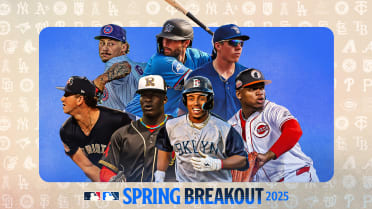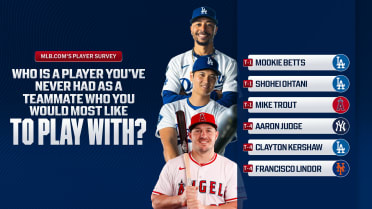Collision forces Keith to exit early as Tigers get small-balled once again
Club is optimistic that second baseman avoided serious damage to left knee
DETROIT -- Colt Keith and Akil Baddoo chased William Contreras’ third-inning popup into short right field Saturday afternoon at Comerica Park, both calling for the ball, both looking to make a play for Casey Mize when the Tigers starter could badly use it. With each big step from the second baseman and right fielder, their eventual collision seemed inevitable and more dangerous, like watching an accident in real time.
“I didn’t know he was coming,” Baddoo said after the Tigers’ 5-4 loss to the Brewers. “Those plays are always tough. Casey was pitching really well, and those plays you have to make. It’s just unfortunate we were both calling it at the same time, and he probably didn’t hear me. Plays like that, you don’t really want to happen. It’s unfortunate.”
Thankfully, what initially looked like a head-on collision was more head-into-arm for both. The more damaging collision was the knee-on-knee impact both sustained. Baddoo said he had a bruise near the top of his knee, but felt fine and stayed in the game. Keith was more shaken and eventually left with what the team called left knee discomfort.
The Tigers did not have an update after the game, but the initial sense in the clubhouse was optimism that Keith avoided serious damage, a sense reinforced by the fact that the Tigers didn’t pull any potential call-up from Triple-A Toledo’s lineup Saturday evening at Iowa.
Still, on a day when the Brewers won again with contact over power, the collision, ruled an error on Keith, encapsulated the Tigers’ frustrations in the field. Milwaukee put up five runs on a day when its only extra-base hit was a Jackson Chourio two-run double.
The Brewers had a strategy, and they were merciless at it: Put the ball in play, run the bases hard and test Detroit’s defense. Mize drew just one swinging strike over 97 pitches, a fourth-inning splitter that Blake Perkins swung over, setting up a called third strike for Mize’s lone strikeout with two outs and the bases empty.
“A lot of contact led to too many hits,” Mize said.
Detroit fanned just three Brewers in the game, while the Tigers struck out 11 times at the plate.
“That’s a tough recipe,” manager A.J. Hinch said. “They take advantage of their speed. They take advantage of their contact skills.”
The combination put pressure on the Tigers defense. It wasn’t quite as egregious as Friday, when 12 of 17 balls in play against Reese Olson went for base hits, but it was more effective than the average 86.7 mph exit velocity off Mize would suggest. Milwaukee put six balls in play at 100 mph or harder off Mize, and four went for outs.
“They’re a really athletic team,” Baddoo said. “They’re really aggressive, and they have a lot of speed out there. When you face a team like that, you have to be aggressive and you have to make sure you get the ball in as soon as possible and be on your toes at all times.”
Milwaukee’s two-run third began with a 43 mph dribbler from Chourio for an infield single and a Brice Turang ground ball through the left side. The Keith-Baddoo collision loaded the bases for a Christian Yelich sac fly on Mize’s next pitch. Left fielder Justyn-Henry Malloy threw to third, but when the throw went to third baseman Matt Vierling between third and home, Turang tagged up and dashed into third before Javier Baez could cover the bag. That turned Willy Adames’ ensuing ground ball into another RBI and turned what had been a 4-1 Tigers lead into a one-run game.
Mize left in the sixth after a leadoff walk to Rhys Hoskins and a one-out single to Joey Ortiz. The Tigers couldn’t turn a double play on speedy Perkins’ ground-ball to second, putting runners on the corners and extending the inning for Chourio’s double to left-center. Not only did Hoskins score to tie the game as Malloy cut off the ball in the gap, but Perkins sped around third and beat the 7-6-2 relay.
“Their speed was really the story of the game,” Hinch said, “and that was a play where their speed came through.”
If the combination of contact and baserunning sound familiar, it’s the type of offense the Tigers would like to play. The last two games have shown it can work, while also showing the Tigers’ struggles to slow it.
Senior Reporter Jason Beck has covered the Tigers for MLB.com since 2002.




